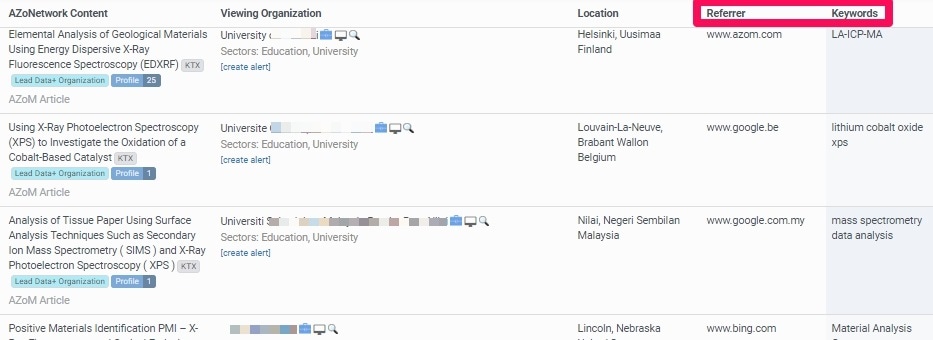
Understanding your Marketing Metrics
Marketing Managers are set to increase their budget for marketing analytics by 83% over the next three years.
Tracking the performance of your website is essential to online success. Without marketing metrics and a clear idea of what improvement will look like, it’s impossible to learn lessons from your digital campaign. The more you understand about how your visitors interact with your site, the easier it will be to attract higher engagement and ultimately win more leads.
"The Market for Big Data and Analytics will grow from Nearly $122 Billion to more than $187 Billion over the next 5 years" - - Click to Tweet
There is a range of free and low-cost analytics tools you can use to get deeper insights into user behavior. These insights can help you iterate your website and gradually improve both the user experience and the effectiveness of your marketing messages — translating to bottom-line growth.
That said, even the best tool is useless without a basic understanding of how to use it. You don’t need to master all the intricacies of digital marketing: Simply be aware of the most valuable web metrics and what they say about your online presence.
Web Metrics You Should Monitor With Analytics
There are dozens of factors that influence the effectiveness of your website, but you can glean vital insights by tracking just a handful of metrics. Some of the most important of these include:
Total Visitors
Many people believe the total number of visitors reaching your site is the most important web metric. This overstates the case, especially in B2B, where lead quality is far more important than quantity. Still, total visitors is the canary in the coal mine: It should always be trending up. When total visits drop off, it can indicate issues with search visibility or important competitor activity.
New Visitors v Returning
It's always great to see when you are expanding your reach to people who may never have heard of your products or didn't realise it had certain specific applications, however there is a lot to be said for nurturing a relationship with returning visitors. Over time, that relationship will develop into trust and when they are ready to think commercially, your name will naturally spring to mind.
Referral Traffic
Acquisition statistics show you what each channel contributes to your web traffic. This helps optimize marketing spend by suggesting which sites, platforms and publications are most vital to raising your online visibility.
It’s important to monitor acquisition when engaging in paid advertising online — if the ads don’t bring in enough traffic, you can work quickly to retool them.
Referral Keywords
Following the encryption of all keyword data by the search engines, every marketer feared for their livelihood. Keywords gave great insight to how people found your content and hence, where you should focus on creating more content. All is not lost however, the analytics tool we use still offers insight into some keyword data and of course, if the referral is coming from Bing, Yahoo or Google, rest assured you are most likely being found by relevant keywords... even if you don't know which ones!

Although most keyword data has been encrypted, it is still possible to view the referral site as well as occasional keywords.
Bounce Rate
This is a measure of the percentage of visitors who leave your site on the first page they reach, without interacting with navigation or any other pages. Think about the objective of your page; whilst it would be great if every visitor took the call-to-action, in reality they have often found what they needed and moved on.
Bounce rate can indicate that your site isn’t meeting visitors’ needs or you’re getting the wrong kind of web traffic. There are some fairly simple steps you can take: Cross-linking your content and using pop-ups to capture user data can prove effective at reducing a high bounce rate.
Social Engagement
Not all free analytics tools offer engagement measures, but any brand that’s active on Facebook, Twitter or Google Plus should track it. Engagement includes things like likes, +1s, and shares — indicators that decision-makers are forwarding your site to their colleagues. To raise social engagement, be sure your new thought leadership content gets shared across all social channels.

Give the reader every chance to share your content using prominent (but not obtrusive!) social sharing buttons.
Five Analytics Tools Your Brand Can Benefit From
As your business expands its online efforts, it may be a good idea to invest in enterprise-class analytics software. That said, effective digital campaigns can be launched and maintained using a number of free or low-cost options. As time goes on, team members will build the knowledge capital they need to get the most from these tools and report results more efficiently. The most important thing is to get started!
Five of the top analytics suites for scientific brands are:
1) Google Analytics
Designed and supported by the #1 search engine for more than a decade, Google Analytics is one of the most robust and sophisticated options out there. It provides granular insights into virtually every aspect of your online presence and offers customized tips on improving your results. That said, it is also one of the most complex tools around. Key metrics are relatively easy to find, but getting truly familiar with it can take months. Thanks to its long development life, its interface has become notoriously hard to use — though the mobile version was recently overhauled.
2) Piwik
Piwik arose as an open source alternative to Google Analytics mainly intended for business-class users who were concerned about the amount of data being funneled to and from Google. Unlike some of the other options, it requires its own hosting. However, it has some great advantages. Its level of functionality is similar to Google Analytics, but its documentation and interface are much more intuitive. Plus, its open source nature makes it easier to customize according to your needs without incurring the annual license fees of most enterprise analytics programs.
3) Clicky
Clicky is another mid-tier entrant in the free analytics space, but it comes with an interesting twist: Unlike Google Analytics and many other competitors, it offers data in real time. Generally, Google Analytics updates every 24 hours — for sites with less traffic, this can take even longer. Clicky’s real-time operation is helpful in situations where content goes viral and provokes a sudden spike of traffic. Not only will you know the source of the spike right away, but you’ll be able to interact with new visitors when interest is at its peak. Clicky also has paid plans.
4) Open Web Analytics (OWA)
As the name implies, Open Web Analytics is an open source web tracking and monitoring solution similar in concept to Piwik. It is completely supported by donations and has no fees. OWA is similar to Google Analytics in its structure and layout, but offers unlimited tracking and logging where Google enforces strict limits. As a result, enterprises migrating from that tool will have a running start. It provides deep documentation and an active community of supporters and developers, but it can be challenging to get it installed and running.
5) Mint
Mint is a relatively new solution that benefits from incorporating some of the best features of its more mature competitors. It stands out for its sleek, modern interface, which makes it easy to learn and use. It is structured from the ground up to provide excellent reporting, which helps web teams find and present ROI their to senior stakeholders. Conversely, some of the “clutter” of information that’s rarely useful has been cut back. Although Mint isn’t free, it warrants mention thanks to it's one-time, $30 fee — there are no recurring subscriptions or other hidden costs.
Analytics are the Foundation of your Long Term Digital Strategy
Leaders in scientific industries understand the importance of data. Without it, your incremental process improvement efforts will be little more than guesses. Luckily, having the right tools empowers you to take a scientific approach to marketing. By integrating one of these solutions into your digital marketing approach, you can focus efforts on what works and cut back on what doesn't.
Just be sure processes are in place to evaluate and disseminate that analytics data — if it doesn't leave the marketing silo, decision-makers at the top won't have all the insights they need to craft a long term strategy. Contact us to see which tool is the best fit for your marketing objectives.